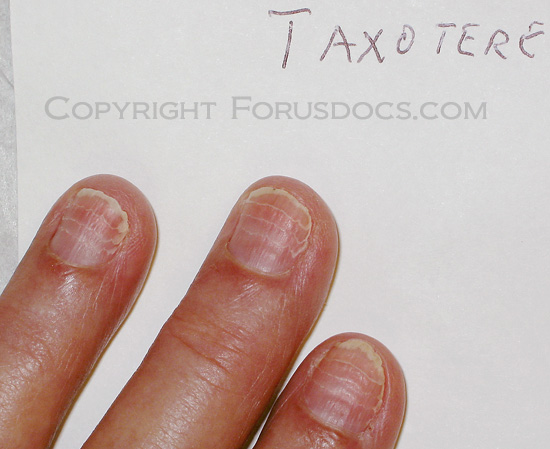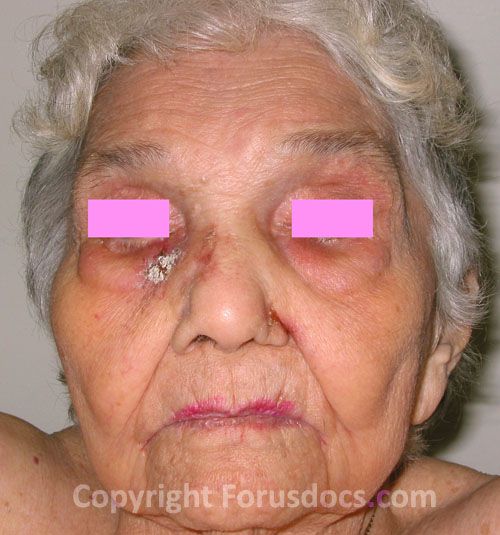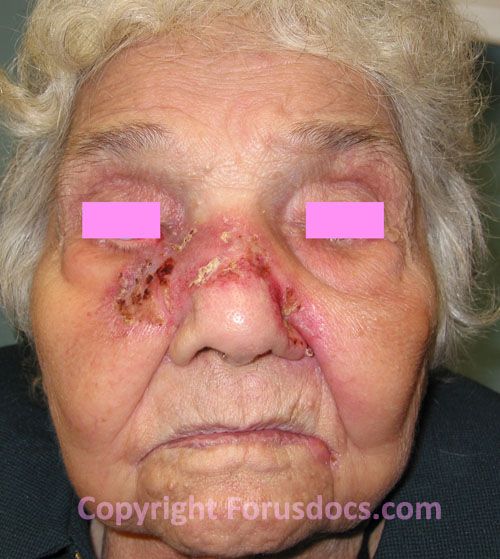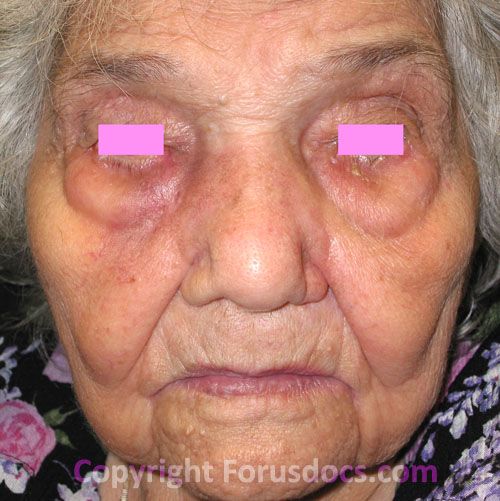
Photo Gallery: Dermatology
Below are high resolution photographs of Beau's lines, and effects of imiquimod (Aldara)cream treatment of skin cancer. The top photo is of a patient on breast cancer chemotherapy who developed a common side effect of docetaxel (Taxotere), Beau's lines of the fingernails. The lower series of photographs shows before, during, and after effects of imiquimod treatment of actinic keratosis and basal cell skin cancers. All images are copyrighted, and may not be copied or modified without permission. You may link directly to these photos as long as the copyright notice is visible and is not obscured.

Beau's Lines: This patient received 4 cycles of
docetaxel (taxotere) chemo spaced three weeks apart. The growth delay from the
taxotere caused these transverse nail ridges, like growth rings in a tree. Beau's lines do not blanche with pressure on the nail, unlike Muehrcke's lines.
After chemotherapy is completed, the damaged nails will grow out
eventually. Until the nails grow back, its a good idea to protect
damaged nails and cuticles with rubber or vinyl gloves when doing
household cleaning.
Nail ridge fillers
can be used as a basecoat
before applying polish can both protect the nails and improve their
appearance.



Treatment Of Actinic Keratosis and Basal Call Carcinoma With
Imiquimod (Aldara):
From top to bottom: Top: Pre Aldara. The actinic keratosis is the scaly lesion on the right, the basal
cell is the small ulcer at the left ala nasi.; Middle:
The patient was on daily Aldara treatment for four weeks. She
developed skin irritation and Aldara was
stopped. The scaly areas are regions of subclinical actinic
keratosis exposed by Aldara; Bottom: Two weeks later. Aldara caused
selective desquamation of damaged skin, followed by complete healing.
Skin irritation from imiquimod is temporary but can be severe. Mild
cases can be managed with topical
Aquaphor.
Severe skin reaction may require both topical xylocaine for pain relief, and
1% Silver Sulfadiazine Cream
to promote healing and prevent infection.




